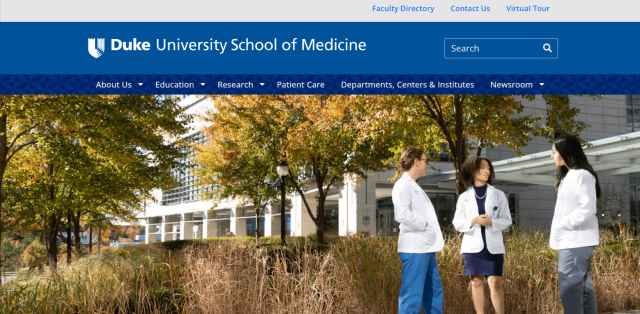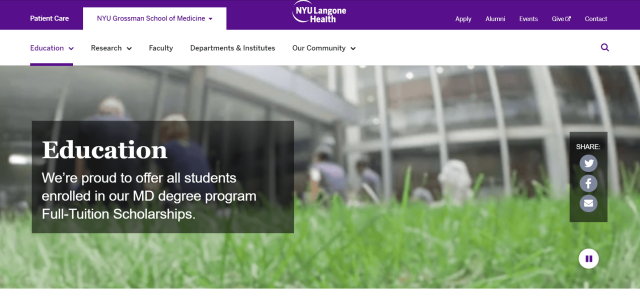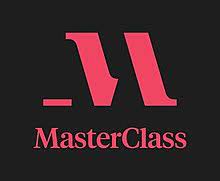Arguably, the United States is the best country in the world to practice medicine.
In the nation, there are a lot of medical schools, both big and small. While some medical schools have a long history, others are only recently founded.
The excellent medical education offered at these schools is a factor that unites them.
You’ve come to the right place if you’re an aspiring doctor looking for admission to a reputable medical school in the US.
In this article, I have listed the top 11 medical schools in the US. Along with the complete fee structure, I have also mentioned the important details about the school that will help you to choose the best school for you.
So, without wasting a single minute, let’s find out Best Medical Schools in the US.
11 Best Medical Schools in the US
If you are in a bit hurry, then you can refer to the table below, which will give you a quick overview of the best medical schools in the US.
| Sr. No | Best Medical Schools in the US | Location | Rating |
| 1 | University of California | San Diego | 4.9/5 |
| 2 | Harvard University | Boston, MA | 4.8/5 |
| 3 | Duke University | Durham | 4.6/5 |
| 4 | University of Pennsylvania | Philadelphia | 4.7/5 |
| 5 | Standford University | California | 4.7/5 |
| 6 | Johns Hopkins University | Maryland | 4.6/5 |
| 7 | Yale University | New Haven | 4.5/5 |
| 8 | New York University | Langone | 4.4/5 |
| 9 | Mayo Clinic school of medicine | Minnesota | 4.7/5 |
| 10 | University of California | San Francisco | 4.5/5 |
| 11 | Columbia University | New York | 4.5/5 |
1. University of California Los Angeles

Overview:
The David School of Medicine at the University of California, Los Angeles is our top pick. It has a concrete learning system for its medical students.
The curriculum is divided into three phases. This includes Human Biology and Disease, core clinical Clerkship, and 4th-year colleges.
This school is affiliated with the top hospitals in the US like Ronald Reagan UCLA Medical centre, Los Angeles County UCLA Medical Center, and Santa Monica UCLA Medical Center.
Students can do a combined degree like M.D, or Ph.D. by enrolling in the medical scientist training program provided by the David School of Medicine. Students can also go for combined degrees like an M.D/MBA or MD in Oral surgery residency with the UCLA Anderson school of management.
There are also a few joint degrees available that are offered in conjunction with other institutes.
This school also conducts several events that include annual events and ceremonies, banquets for second and fourth-year students, and many talent shows. There is also a hostel facility available from the university.
The application fee for this school is $95. It is also ranked 19th in the best medical schools: Research. The full-time faculty count is around 2,806 which is quite good.
| Location | Los Angeles |
| QS World Ranking | 44 |
| Average Tuition Fees for International students | $105,300 |
| Average MCAT score | 517 |
| Student Faculty Ratio | 3.9:1 |
| Acceptance Rate | 2.4% |
| Total Enrollment | 731 |
2. Harvard University, Boston, MA

Overview:
Harvard University is one of the oldest and top-rated universities in the US. Most of the students prefer to study at Harvard University among which 20% of them are international students.
There are altogether 10175 full-time faculty members at the medical school. It is also regarded as the top medical school for both primary care and research. care.
Internal medicine is a speciality at this institution. It is the most multicultural medical school in the United States. The majority of recent medical graduates work in underserved communities. Additionally, a lot of students are working in rural and primary care settings.
The college grants specialization PhD degrees, MDs, and master’s graduate degrees. The Harvard School’s MD program offers two academic tracks, namely Pathways and Health Science & Technology. They can thus customize their path to an MD degree based on their interests and strengths.
Additionally, HMS offers a staggering array of research opportunities that are overseen by the distinctive HMS synergy.
| Location | Boston, MA |
| QS World Ranking | 5 |
| Average Tuition Fees for International students | $325,000 |
| Average MCAT score | 519 |
| Student Faculty Ratio | 14.6:1 |
| Acceptance Rate | 3.3% |
| Total Enrollment | 699 |
3. Duke University

Overview:
Our next pick is Duck University, which provides executive programs, graduate programs, and doctoral programs.
In contrast to other medical universities where students must complete 4 years of medical education, the Duke University curriculum is framed very differently.
Students study basic sciences in the first year, clinical rotations in the second year, scholarly research in the third year, and clinical electives in the fourth year.
The largest academic institution dedicated to medical research in the world, Duke University, conducts studies on a range of topics to advance the medical sector.
The Duke University research team conducts phase I to phase IV trials for unidentified diseases.
This school has close ties to neighbourhood clinics and healthcare-related community initiatives.
It is ranked 78th for primary care and sixth among the best medical schools for research.
| Location | Durham, NC |
| QS World Ranking | 52 |
| Average Tuition Fees for International students | $248,000 |
| Average MCAT score | – |
| Student Faculty Ratio | 2.7:1 |
| Acceptance Rate | 9% |
| Total Enrollment | 507 |
4. University of Pennsylvania

Overview:
The University of Pennsylvania is the oldest medical school and teaching hospital in the US. It is now known as the Perelman school of medicine.
The school has the most evidence-based curriculum that covers concrete medicine education.
Students study in small groups which increases their interaction and self-directed learning. This school also offers many combined degree programs for MD.
This medical school has over 36 free-standing, interdisciplinary clinics for immunotherapy, Oncology, Diabetes, Cardiology, geriatric, neurology, cardiology, and organ transplant.
Six acute care facilities at the school support various research initiatives, and students gain experience working in free community clinics and other outreach initiatives.
In addition, UPenn serves as the hub of the University of Pennsylvania Health System, a significant multi-hospital healthcare system made up of 13 hospitals in Philadelphia.
| Location | Philadelphia, USA |
| QS World Ranking | 13 |
| Average Tuition Fees for International students | $240,000 |
| Average MCAT score | 522 |
| Student Faculty Ratio | 4.3:1 |
| Acceptance Rate | 4.4% |
| Total Enrollment | 612 |
5. Standford University

Overview:
Finding a medical school that can compete with Stanford University’s research, development of procedures, and development of ground-breaking diagnostic therapies would be difficult if cutting-edge research is your passion.
The first heart transplant in the United States and the first successful heart-lung transplant worldwide are among the impressive list of medical breakthroughs for this medical school.
Seven dual degree programs, including master’s degrees in public health, medical science, business, law, and other fields, are offered by this institution.
The 15 Core Competencies in the four domains of Science, Intrapersonal, Interpersonal, and Thinking and Reasoning are used to evaluate applicants to medical school holistically.
The research at Stanford receives the highest NIH funding per researcher in the nation due to its facilities and affiliated institutes.
Basic science studies and clinical trials for particular diseases are all included in the research. Additionally, Stanford University provides public health, a global research, and innovative design, as well as community-based training and research.
| Location | Standford, USA |
| QS World Ranking | 3 |
| Average Tuition Fees for International students | $482,000 |
| Average MCAT score | 519 |
| Student Faculty Ratio | 2.2:1 |
| Acceptance Rate | 2.3% |
| Total Enrollment | 489 |
6. Johns Hopkins University

Overview:
There are degrees available that allow students to specialize in public health, medical science, or the business side of running a medical practice.
Residency and fellowship programs are offered by the medical school’s Graduate Medical Education in a variety of clinical specialities. The Medical School has a dedicated Office of Medical Student Diversity and is committed to inclusivity.
The learning community created by JHUSOM is modelled after Hogwarts’ houses. Four colleges — Nathans, Sabin, Taussig, and Thomas — bearing the names of important Hopkins faculty members are where students are assigned.
Each cluster’s advisors assist students in choosing courses, research topics, and careers. The program aims to promote friendship among students over the course of their four years of medical school.
Additionally, the curriculum is organized in a novel way that emphasizes health and diseases as it adapts to the environment rather than the conventional dichotomy of what is normal and abnormal.
You can conduct research in a variety of fields with JHMS-affiliated institutes, including genetics, cell engineering, biomedical sciences, and brain science.
| Location | Baltimore |
| QS World Ranking | 25 |
| Average Tuition Fees for International students | $214,000 |
| Average MCAT score | 521 |
| Student Faculty Ratio | 5.0:1 |
| Acceptance Rate | 6.0% |
| Total Enrollment | 476 |
7. Yale University

Overview:
The medical school at Yale is renowned for its excellence in both research and care. The Yale School of Medicine provides each of its students with a personal research librarian who guides them through the school’s extensive library of resources so they can graduate with a top-notch thesis.
The university is renowned for the wide variety of resources available to students right in the library.
The school educates students in a variety of medical specialities, including public health, medicine, and biomedical science.
Yale has a strong commitment to clinical trials and was at the forefront of trials for the COVID-19 vaccine in both adults and children. The educational divisions cover every speciality, from anesthesiology to urology.
During the first two years of medical school, students receive no ranks or grades. The exams are also short, leaving students with little time for research.
For medical students, the foundational course lasts four years. Students do, however, pay tuition for an additional year of study in order to conduct in-depth research.
Medical students can complete their degrees in a variety of other programs offered by the university, depending on their areas of interest.
| Location | New Haven |
| QS World Ranking | 14 |
| Average Tuition Fees for International students | $252,000 |
| Average MCAT score | 521 |
| Student Faculty Ratio | 6.7:1 |
| Acceptance Rate | – |
| Total Enrollment | 408 |
8. New York University, Langone

Overview:
Perhaps NYU is best known for its elimination of tuition for all current and future medical students, a change that changed lives and started in 2018.
Additionally, NYU provides a wide range of dual degree programs that pair an MD with a master’s degree in clinical research, global health, general management, or bioethics.
There is also a three-year accelerated MD program that is based at McMaster University Medical School in Canada.
To uphold the school’s commitment to tuition-free medical education, the NYU Grossman School of Medicine MD program offers full-tuition scholarships to every student enrolled in the program.
This translated into an annual scholarship amount of $58,226 for each student with good academic standing in 2020–21.
The McMaster University Medical School in Canada-like a 3-year accelerated MD track is another program offered by the NYU School of Medicine.
There are more than 50 student clubs and initiatives at the school. In order to increase the students’ interest in athletics, academics, nation-building, and clinics, one of these programs promotes international health.
| Location | Langone |
| QS World Ranking | – |
| Average Tuition Fees for International students | – |
| Average MCAT score | 522 |
| Student Faculty Ratio | 2.4:1 |
| Acceptance Rate | 2.4% |
| Total Enrollment | 430 |
9. Mayo Clinic School of Medicine

Overview:
The Mayo Clinic has treated 1.5 million patients from all 50 states while being committed to the education of medical professionals.
The Alix School of Medicine at the Mayo Clinic College of Medicine and Science is well known for its research initiatives. This medical school is among the top 15 research-producing institutions in the country.
The university provides more than 400 programs that cover every aspect of medicine in the fields of health sciences, medicine, and surgery.
First- and second-year students are permitted to enroll in “selective,” which are one- to two-week courses chosen by them and intended to expand their clinical knowledge and experiences beyond what is taught in the core curriculum.
Students in their third year produce a scientific research paper, which they frequently submit for publication. In a peer-reviewed journal, more than 80% of Mayo students leave with a published research manuscript.
| Location | Alix |
| QS World Ranking | – |
| Average Tuition Fees for International students | – |
| Average MCAT score | 520 |
| Student Faculty Ratio | 2.3:1 |
| Acceptance Rate | 2.4% |
| Total Enrollment | 362 |
10. University of California, San Francisco

Overview:
The Bridges Curriculum, developed by UCSF SOM prepares doctors for the twenty-first century. Medical knowledge, patient care, evidence-based learning, systems-based practice, communication skills, professionalism, and professional collaboration are the seven competencies that make up the MD program’s cutting-edge curriculum.
As you advance through the program, you will be expected to meet competency goals. Doctor of Physical Therapy and a PhD in Rehabilitation Science with a research focus are two other speciality curricula.
Additionally, it places a special emphasis on serving San Francisco’s underserved communities. To address healthcare disparities, the Center for Community Engagement, Population Health & Health Equity, and the Benioff Homelessness & Housing Initiative collaborate closely.
Their goal is to equalize UCSF’s community accessibility with that of the local library.
| Location | San Francisco |
| QS World Ranking | – |
| Average Tuition Fees for International students | $187,100 |
| Average MCAT score | 518 |
| Student Faculty Ratio | 4.3:1 |
| Acceptance Rate | 3.8% |
| Total Enrollment | 643 |
11. Columbia University

Overview:
The third-best medical school for research and primary care is Columbia University of Medicine.
The narrative medicine concept is developed by this school with a patient-centred approach, emphasising the patient’s story as an essential component of the diagnosis and treatment process.
The NIH provides over $622 million in funding for its research and development, which is another reason for its fame.
The curriculum at Columbia has been reorganized into three major categories: Fundamentals, Major Clinical Year, and Differentiation and Integration. In order to receive their degree, students must also finish a scholarly research project.
| Location | New York |
| QS World Ranking | 19 |
| Average Tuition Fees for International students | $73,800 |
| Average MCAT score | 521 |
| Student Faculty Ratio | 3.7:1 |
| Acceptance Rate | 3.5% |
| Total Enrollment | 580 |
Conclusion:
Here is our ranking of the top US medical schools for 2024. These medical schools have been ranked based on factors such as academic standing, curriculum variety, and educational quality.
Before deciding to apply for admission, be sure to get in touch with the administrative office of the medical school of your choice and ask about crucial details.
What are your thoughts on this? Let us know in the comment section below.
- CFI Discount Code (April 2024) – 40% OFF Coupon - April 3, 2024
- 25% Grammarly Student Discount (April 2024) - March 28, 2024
- College Dropout Rates 2023-24(Demographic Stats) - March 20, 2024


